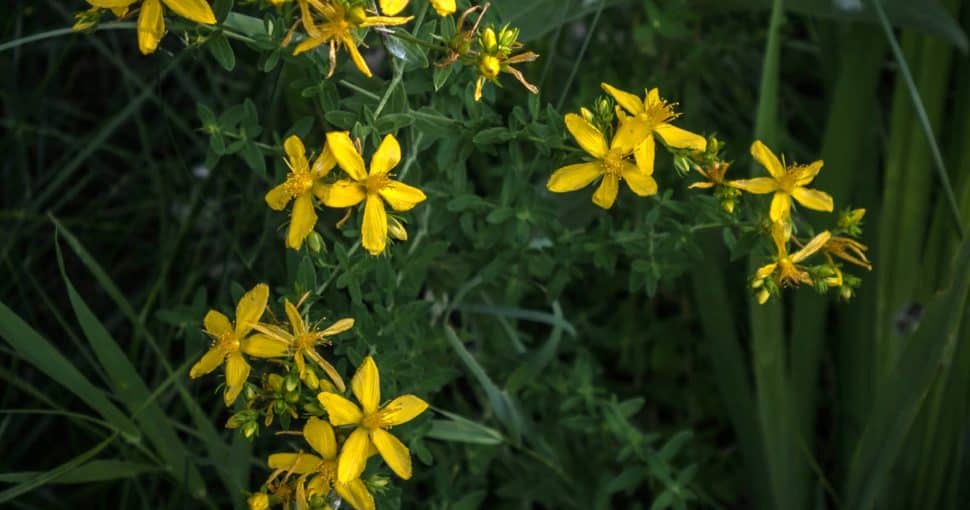There are several beautiful types of plants in Idaho that can be dangerous or even fatal to touch or eat. Many such plants are found in Idaho. Some may be flowering plants, while others may not. Nevertheless, if you plan to go outdoors in natural landscapes for a hike, it’s vital that you have some knowledge of these plants. You can be more careful not to go near them, as they can put your life or the lives of others with you at risk.
Contents
- 1. Poison Hemlock (Conium Maculatum)
- 2. Poison Ivy (Toxicodendron Radicans)
- 3. Bracken Fern (Pteridium Esculentum)
- 4. Wolf’s Bane/Monkshood (Aconitum)
- 5. Baneberry (Actaea Rubra)
- 6. Dogbane/Indian Hemp (Apocynum Cannabinum)
- 7. Milkweed (Asclepias)
- 8. Locoweed (Oxytropis)
- 9. Hound’s Tongue (Cynoglossum Officinale)
- 10. Myrtle Spurge (Euphorbia Myrsinites)
- 11. Larkspur (Delphinium)
- 12. Steer’s Head (Dicentra Uniflora)
- 13. Klamath Weed/St. John’s Wort (Hypericum Perforatum)
- 14. Lupine (Lupinus)
- 15. Buttercups (Ranunculus)
- 16. Tansy Ragwort (Senecio Jacobaea)
- 17. Bittersweet/Woody Nightshade (Solanum Dulcamara)
- 18. Stinging Nettle (Urtica Dioica)
- 19. Corn Lily (Veratrum Californicum)
- 20. Cocklebur (Xanthium Strumarium and Spinosum)
- 21. Death Camas (Toxicoscordion Venenosum)
- 22. Daffodil (Narcissus)
It‘s possible that you may also encounter some of these plants in public parks. So, if you’re going for a walk with your dog, make sure to keep an eye on their exploration. The last thing you want them to do is to consume part of a poisonous plant.
This article, thus, covers 22 different poisonous plants in Idaho. It mentions basic descriptions of the plants’ appearance so that you may be able to identify one from afar. Some of the symptoms of touching or consuming these plants can vary. While some may lead to mild symptoms, others may be fatal to human beings or animals. So, let’s learn more about these plants.
1. Poison Hemlock (Conium Maculatum)
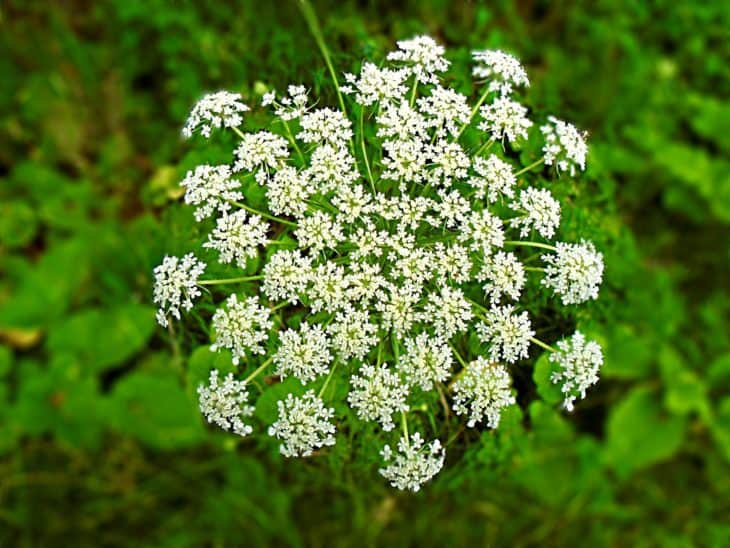
Poison hemlock (Conium Maculatum) is a biennial herb that reaches about 8 feet tall. The plant’s stems are smooth, hollow and usually purple in color with stripes on them or mottled with red. You should be very careful of this plant because eating as few as 8 leaves of it is enough to kill a human.
2. Poison Ivy (Toxicodendron Radicans)
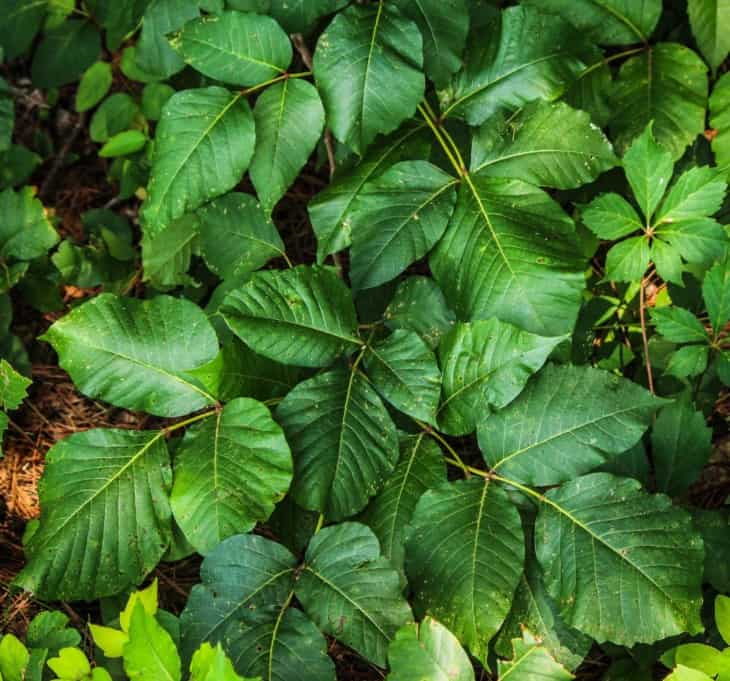
The poison ivy plant is a climbing vine or shrub that may change color based on the season. In the summer, it has shiny, smooth, and non-lobed green leaflets and small white berries. Don’t touch this plant because you may experience severe dermatitis as a result. Burning any part of the plant can also release toxic fumes.
3. Bracken Fern (Pteridium Esculentum)
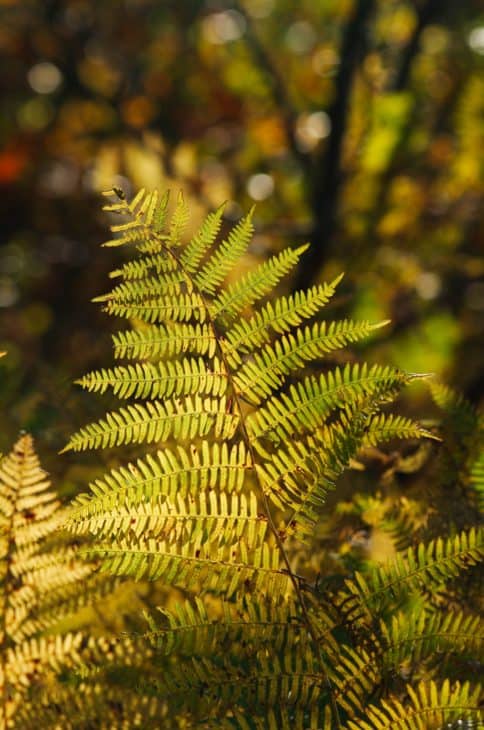
The bracken fern is a vascular plant. It has fronds that can grow to about over 8 feet long and over 6 feet tall. You can find these large ferns in disturbed forest land. Eating the fiddlenecks and fronds is poisonous, but cooking them thoroughly can make them edible. Large animals like llamas and horses can also be poisoned by this plant if they consume too much of it.
4. Wolf’s Bane/Monkshood (Aconitum)
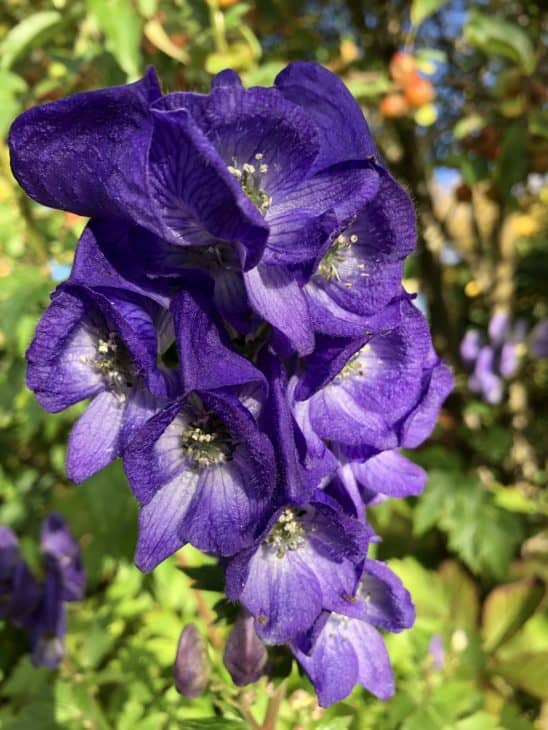
The Aconitum plant, popularly known as wolf’s bane or monkshood, is a perennial plant with stems that are between 2 and 4 feet tall. There are purple-blue flowers on the stems. Monkshood is known as a highly poisonous plant. However, in most cases, an accidental touch or even bite of any part of the plant is not enough to kill you or an animal. Nevertheless, it’s best to stay away from it.
5. Baneberry (Actaea Rubra)
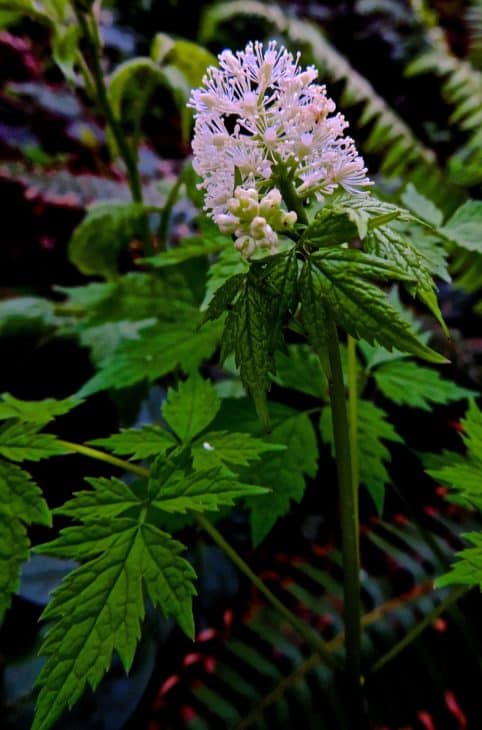
Baneberry is a fruit-bearing plant that is about 3 feet tall at full maturity. This plant has brightly colored berries that may attract children and some animals. The berries, along with the roots, are also the most toxic part of this pant. Consuming them could lead to delirium, vomiting, long-lasting stomach cramps, etc. This plant usually grows in wetlands.
6. Dogbane/Indian Hemp (Apocynum Cannabinum)
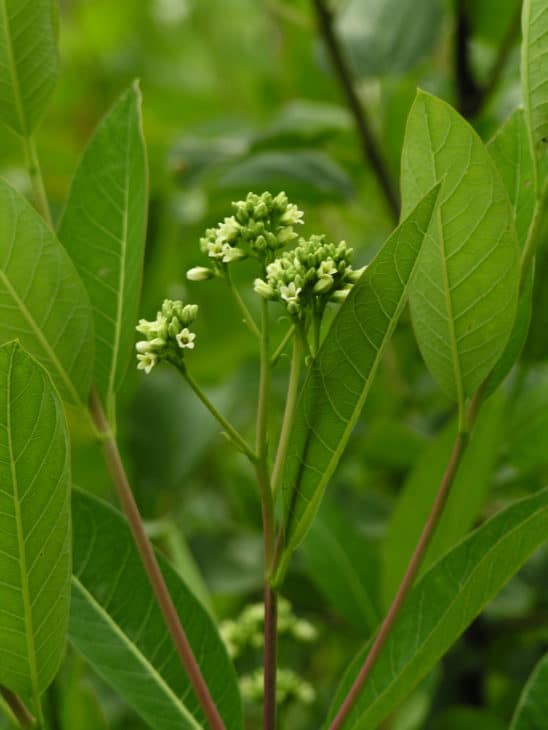
Dogbane is a flowering plant with waxy pink flowers. The plant also has a milky sap that contains cardiac glycoside, a toxic substance that can cause heart failure. Dogbane is especially dangerous for dogs—hence its name. This plant has a similar species called Indian hemp, which grows in elevation wetlands. This particular plant is upright and tall in appearance.
7. Milkweed (Asclepias)
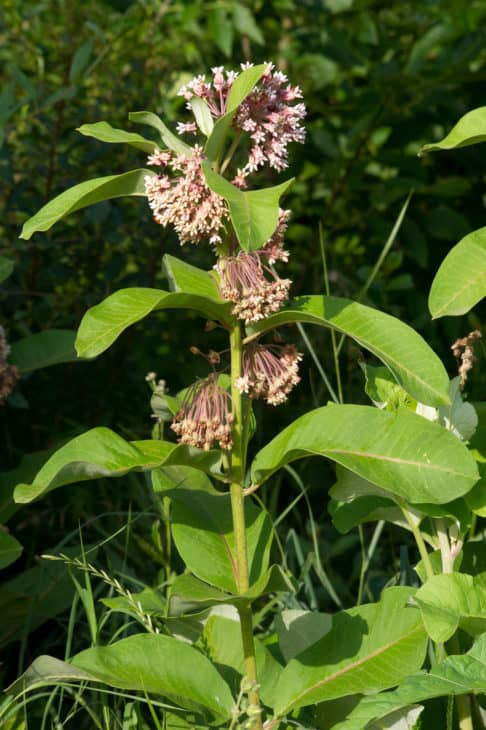
The milkweed plant, or showy milkweed, is a perennial plant. It has clusters of sweet-smelling, star-shaped flowers that are pinkish-white in color. The star-like flowers are a unique feature of this plant. The plant gets its name from the milky latex in it that is released when the plant’s cells are damaged. All parts of this plant above the ground are poisonous, including the leaves.
8. Locoweed (Oxytropis)
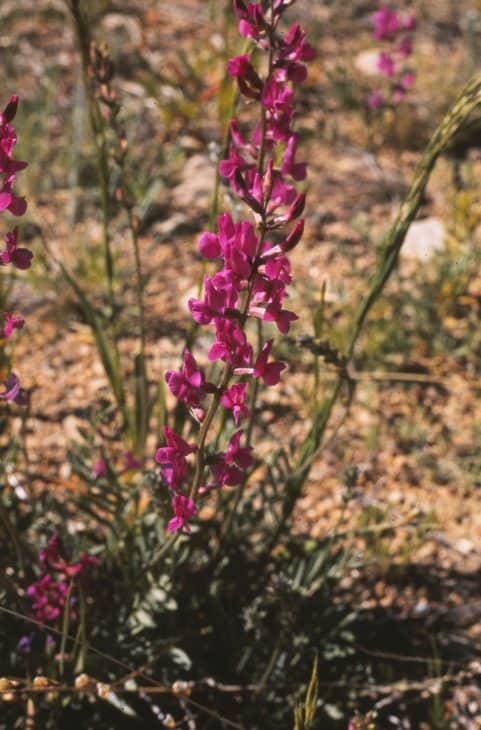
The locoweed is the toxic variety of the Astragalus plant. Locoweed’s flowers look like sweet peas with yellow, purple, white, or blue colors. If you have horses, you should be especially careful because they can get addicted to this plant. As a result, they may not eat other foods, and that could result in death. This plant is also dangerous to humans if consumed in excess.
9. Hound’s Tongue (Cynoglossum Officinale)
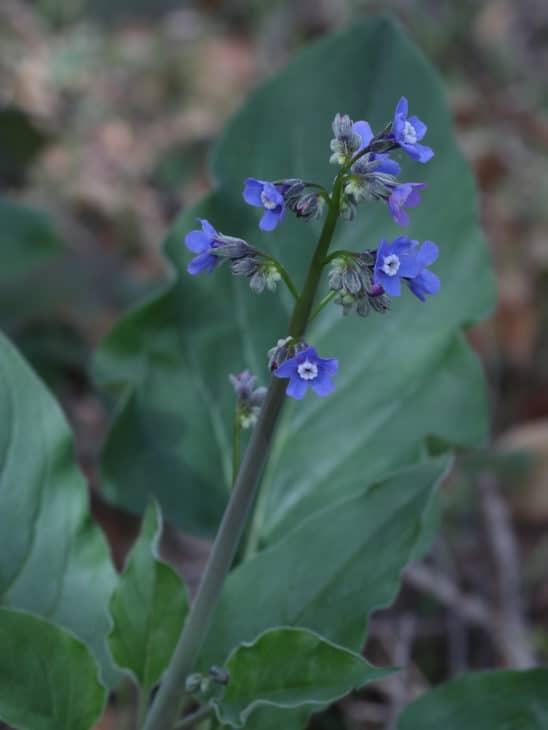
The hound’s tongue plant can easily catch your eye with its purple and dull reddish flowers. You may find this plant in forests with Douglas-fir and pine trees. This plant is extremely toxic. Consuming any part of it could result in permanent liver damage that is completely irreversible. Thus, don’t go near it, and be especially careful when you’re with children or pets.
10. Myrtle Spurge (Euphorbia Myrsinites)
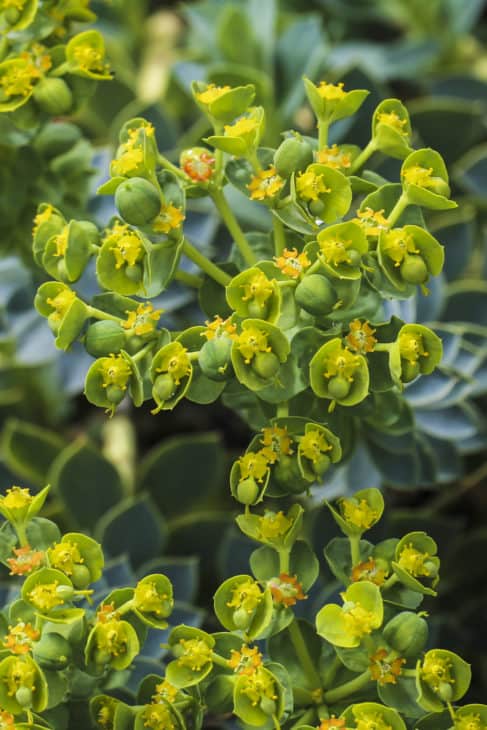
Myrtle spurge is a succulent, evergreen perennial plant about 0.5 feet tall. It has blue-green fleshy leaves in tight spirals and yellow-green flowers shaped like stars. All parts of the plant are toxic to people and animals if consumed. It also has a milky sap that can result in eye and skin irritation if you touch it.
11. Larkspur (Delphinium)
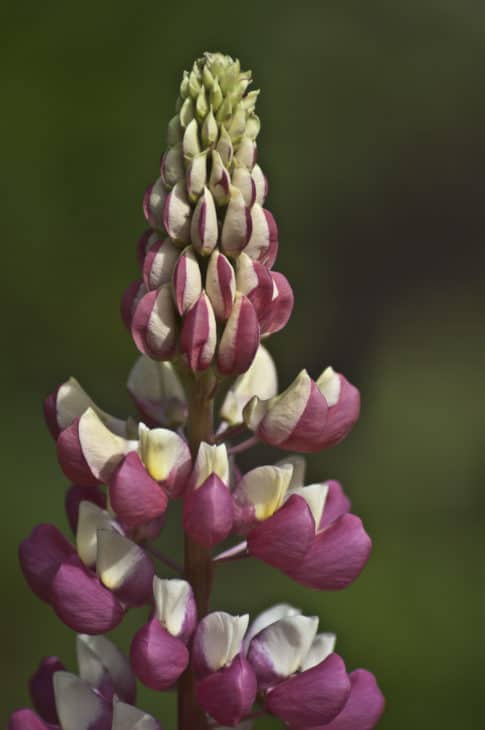
There are multiple larkspur species in Idaho. The tall ones are found in forested areas along streams. On the other hand, the short variety usually grows in shrublands and forests. Larkspur is commonly found with blue flowers, but some may have white ones. Consuming the plant could result in weakness, nausea, abdominal pain, and even respiratory paralysis. The seeds are the most toxic part, but all of it is toxic.
12. Steer’s Head (Dicentra Uniflora)
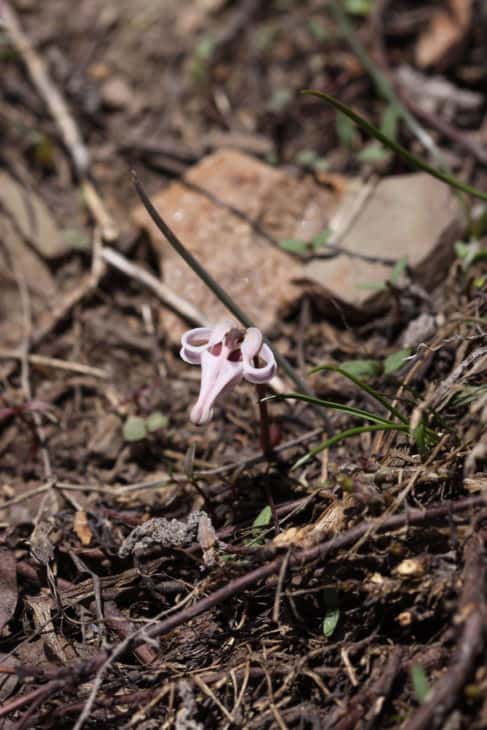
The steer’s head is a small perennial plant with flower stalks and leaves that grow separately from the plant. This plant is highly poisonous, but it is uncommon for death to occur after consuming any part of it. However, it could result in symptoms such as diarrhea, vomiting, difficulty breathing, and severe trembling. The symptoms can be far worse among children.
13. Klamath Weed/St. John’s Wort (Hypericum Perforatum)
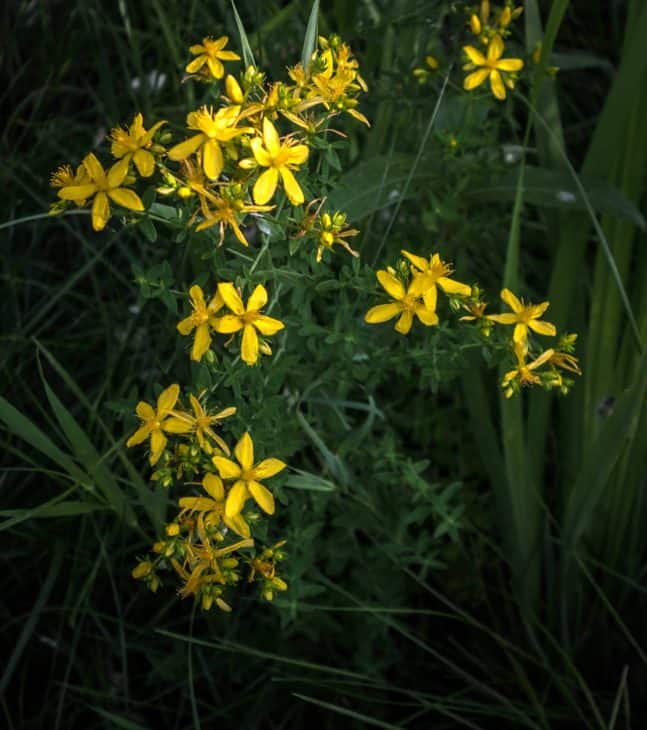
The Klamath weed or St. John’s wort is an erect plant. It has bright yellow flowers and opposite leaves. You are most likely to encounter this plant in low-elevation dry areas. Be careful not to touch this plant if you have sensitive skin because it contains oily droplets that may result in a skin rash. Moreover, eating a lot of the plant could result in increased heart rate, raised temperature, diarrhea, convulsions and blindness in people and animals.
14. Lupine (Lupinus)
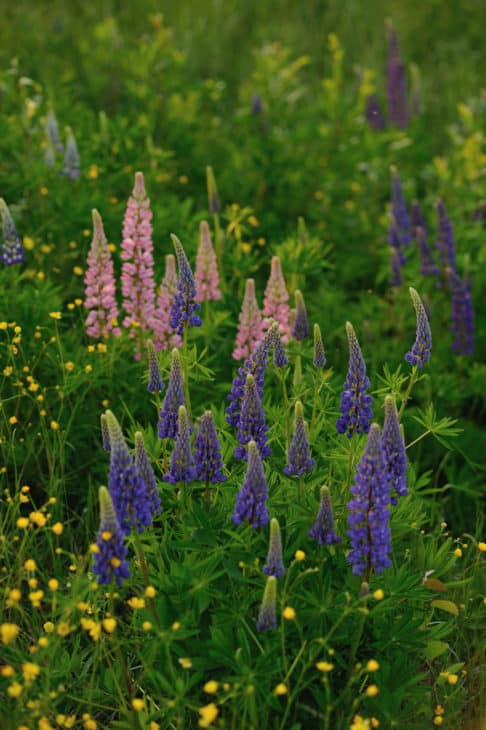
Lupine is a flowering plant. All parts of the plant are toxic to humans and animals. Women who consume lupine could have children with birth defects. Livestock may consume this plant, and the toxin may be spread through its milk. Therefore, women who consume this toxic milk during pregnancy could face such problems. Also, livestock that consumes this plant in high quantities may die.
15. Buttercups (Ranunculus)
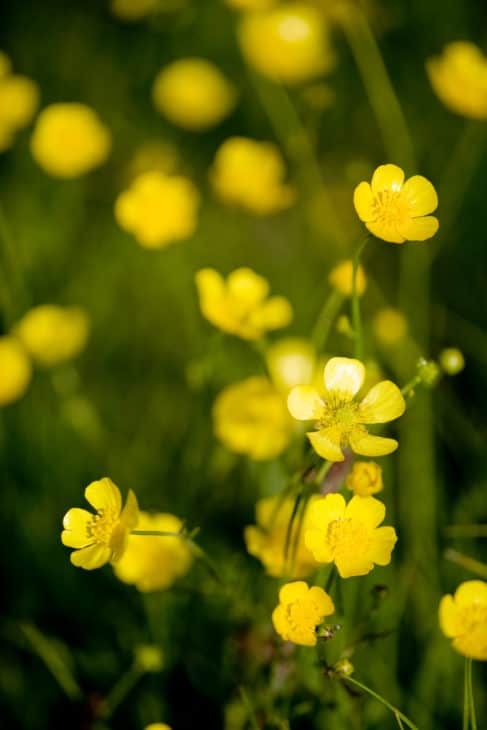
Buttercups have bright and shiny yellow flowers. These plants are typically found in areas with damp or wet soil. There are various species of buttercups, some more toxic than others. Some may have irritant oils on them, which could cause blisters in the mouth if consumed. That said, grazing animals are at more risk of this plant than people.
16. Tansy Ragwort (Senecio Jacobaea)
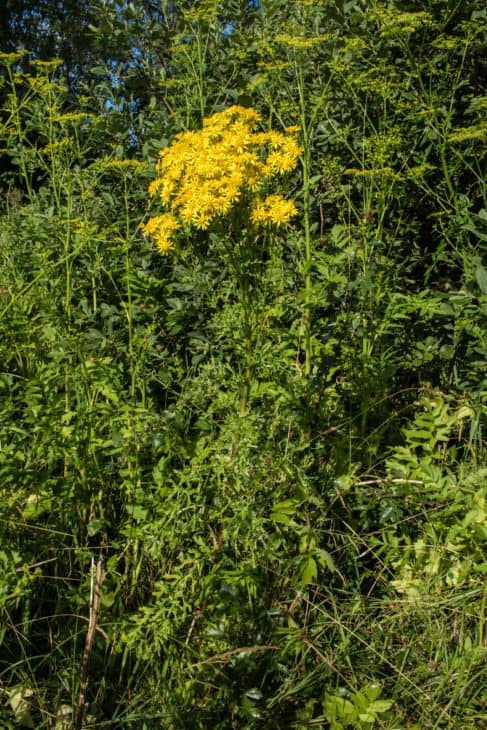
Tansy ragwort is a biennial weed that’s commonly found on rails, along roads, and in pastures. This toxic wasteland weed is possibly carcinogenic. It is also known for potentially causing liver damage if consumed. That said, human fatalities from this plant are not common. That said, a person can experience the same effects if they drink the milk of livestock that has consumed this plant. See ragwort alternatives.
17. Bittersweet/Woody Nightshade (Solanum Dulcamara)
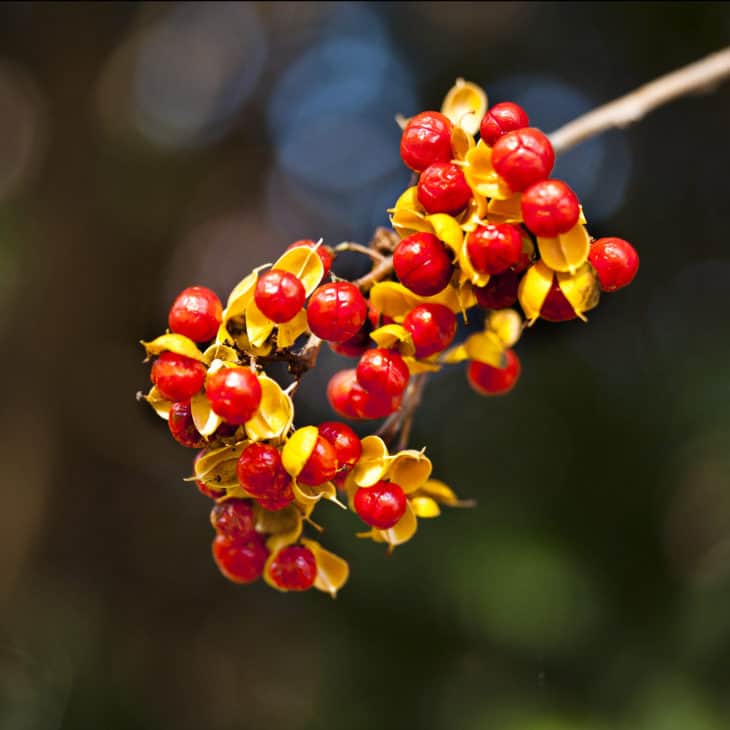
The Solanum Dulcamara plant, which is also known as the bittersweet/woody nightshade, is a herbaceous vine that can be about 15 feet long. The plant has star-shaped flowers that are violet and yellow in color. The berries on this plant are particularly dangerous. They are shiny green when young, and they turn to a bright red when they mature.
18. Stinging Nettle (Urtica Dioica)
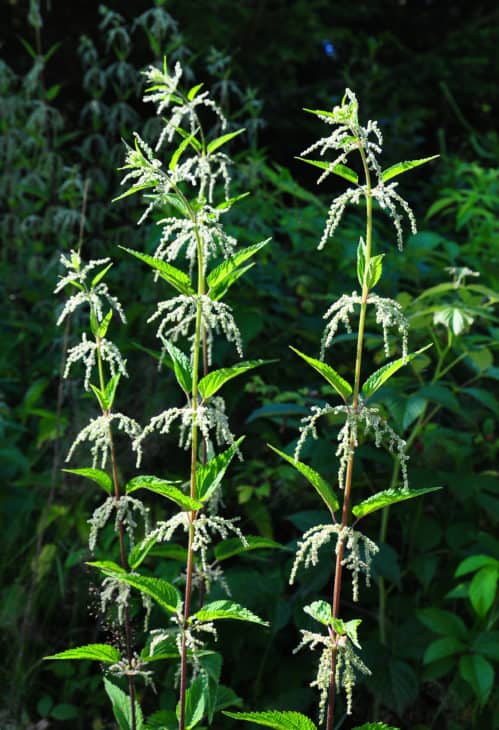
The stinging nettle plant has oval leaves with pointy ends and jagged teeth on the edges. The leaves are along the plant’s stem, and each leaf is opposite the other. The plant also has flowers arranged in clusters. That said, you can identify this plant by its spiky spines on the leaves and stems that also sting and poison those who touch it.
19. Corn Lily (Veratrum Californicum)
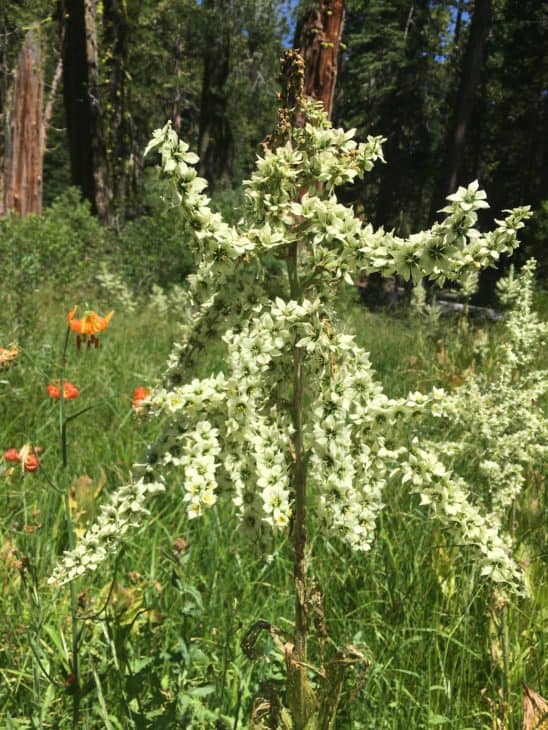
Corn lily grows about 7 feet tall at most and has a leafy and heavy stem. There are tiny flowers clustered at the top of the plant’s stem. This plant is highly poisonous. It can kill a person or an animal if they consume any part of it. However, the roots are the most toxic part of the plant.
20. Cocklebur (Xanthium Strumarium and Spinosum)
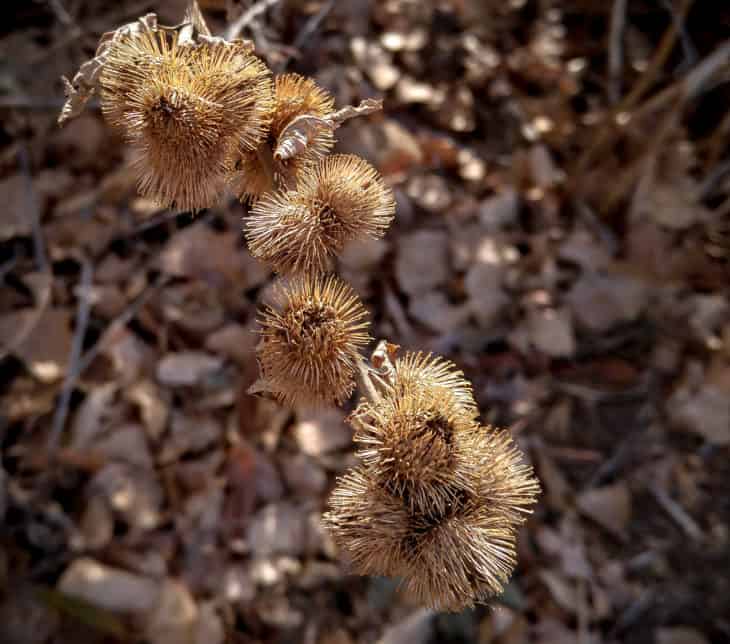
Cocklebur is a weedy annual herb that originates from Europe. You can find this plant at lakeshores and along river banks. There haven’t been any human poisoning cases with this plant. At most, people with sensitive skin may develop a rash. However, the seedlings and the seeds are highly toxic to animals, as they can be fatal as well.
21. Death Camas (Toxicoscordion Venenosum)
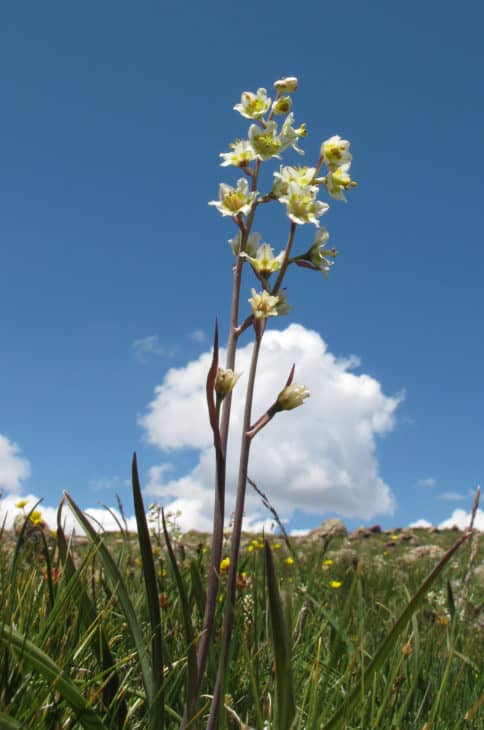
The death camas plant has leaves that look like grass, making it easy to confuse with wild onions. However, this plant has creamy white flowers and doesn’t have a distinctive onion smell. All parts of the plant are toxic to people and animals, and they can even be fatal. Before causing death, it may result in symptoms such as burning lips, excessive salivations, stomach pain, mouth-numbing, diarrhea, vomiting, confusion, difficulty breathing, and coma.
22. Daffodil (Narcissus)
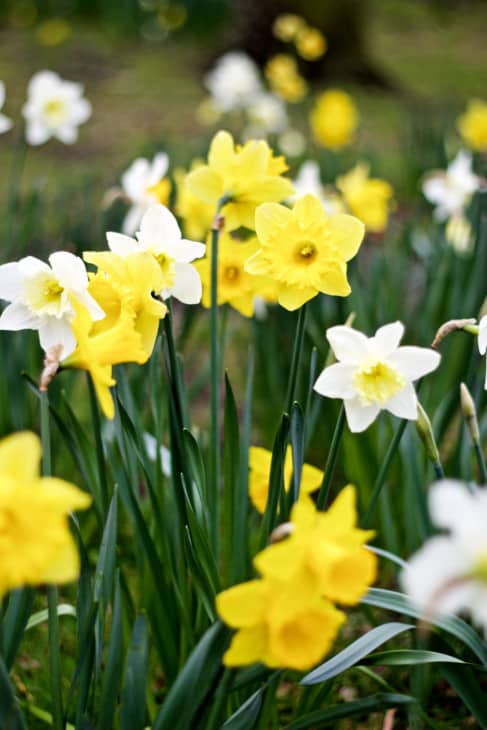
Daffodil is a perennial flowering plant. The flowers have 6 petals with a corona shaped like a cup or a trumpet. The flowers are usually yellow or white in color, but they may vary with some garden-grown varieties, in which they may be orange or pink. The plant’s bulbs are especially toxic. Consuming it could result in death, so don’t mistake one for an onion.

